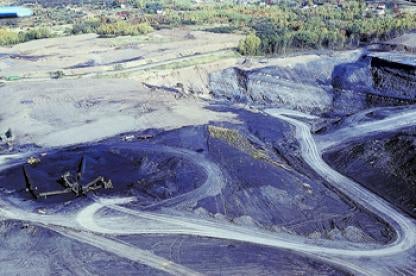On Nov. 26, 2013 the Office of Management and Budget released its Fall 2013 regulatory agenda. The Mine Safety and Health Administration, the agency I oversee, has nine regulations in various stages of rulemaking. Two of these rules are nearing completion and will have direct impact on the safety and health of our nation’s miners.
The first one, “Lowering Miners’ Exposure to Respirable Coal Mine Dust, Including Continuous Personal Dust Monitors,” has been years in the making.
For too long, coal miners have contracted, suffered and died from debilitating coal workers’ pneumoconiosis, an irreversible and progressive lung disease, and chronic obstructive pulmonary disease, which includes chronic bronchitis and emphysema. These are among the several diseases commonly known as “black lung,” and they are preventable diseases. There have been various efforts to reduce and eliminate the scourge of black lung and control respirable coal mine dust over the years. Some have been more successful than others, but none have accomplished the goal of ending black lung.
According to recent statistics, cases of black lung are increasing among the nation’s coal miners. Even younger miners are showing evidence of advanced and debilitating lung disease from excessive dust exposure. Thousands of miners have died from black lung and, while the major cost is precious human life, there is a significant financial cost as well. The federal government has paid out more than $44 billion in compensation for miners totally disabled by black lung since 1970.
This proposed rule would significantly improve health protections for the nation’s coal miners by reducing their occupational exposure to coal dust and lowering the risk that they will suffer impairment of health or functional capacity over their working lives.
Every miner should be able to go work without compromising his or her health. No miner should die, no family should lose a loved one and no one should suffer a diminished quality of life due to black lung.
The second proposed rule, “Proximity Detection Systems for Continuous Mining Machines in Underground Coal Mines,” addresses hazards that miners face when working near continuous mining machines in underground coal mines.
Continuous mining machines, or continuous miners, as they are known in the industry, are electric-powered cutting machines that remove coal from the face and load it into shuttle cars, other haulage equipment or onto conveyer belts.
Proximity detection systems can be programmed to send warning signals to alert miners to the presence of moving machinery and can stop the machinery before it strikes, pins or crushes a miner working in the vicinity.
Between 1984 and 2013, there were at least 34 crushing fatalities involving continuous miners that could have been prevented with the use of proximity detection systems.
The proposed rule would strengthen the protection of miners working near these machines in underground coal operations by equipping them with proximity detection systems.
Already a number of mine operators have embraced this technology. As of Sept. 30, 283 proximity detection systems had been installed on underground continuous miners.
The nearly 400,000 men and women who work in our nation’s mines should not have to sacrifice their lives or livelihood to provide for their families. Both of these rules will help ensure that miners return home safe and healthy at the end of every shift.
Authored by Joseph Main is the assistant secretary of labor for mine safety and health. from Work in Progress Bog the Official Blog of the U.S. Department of Labor



 i
i




